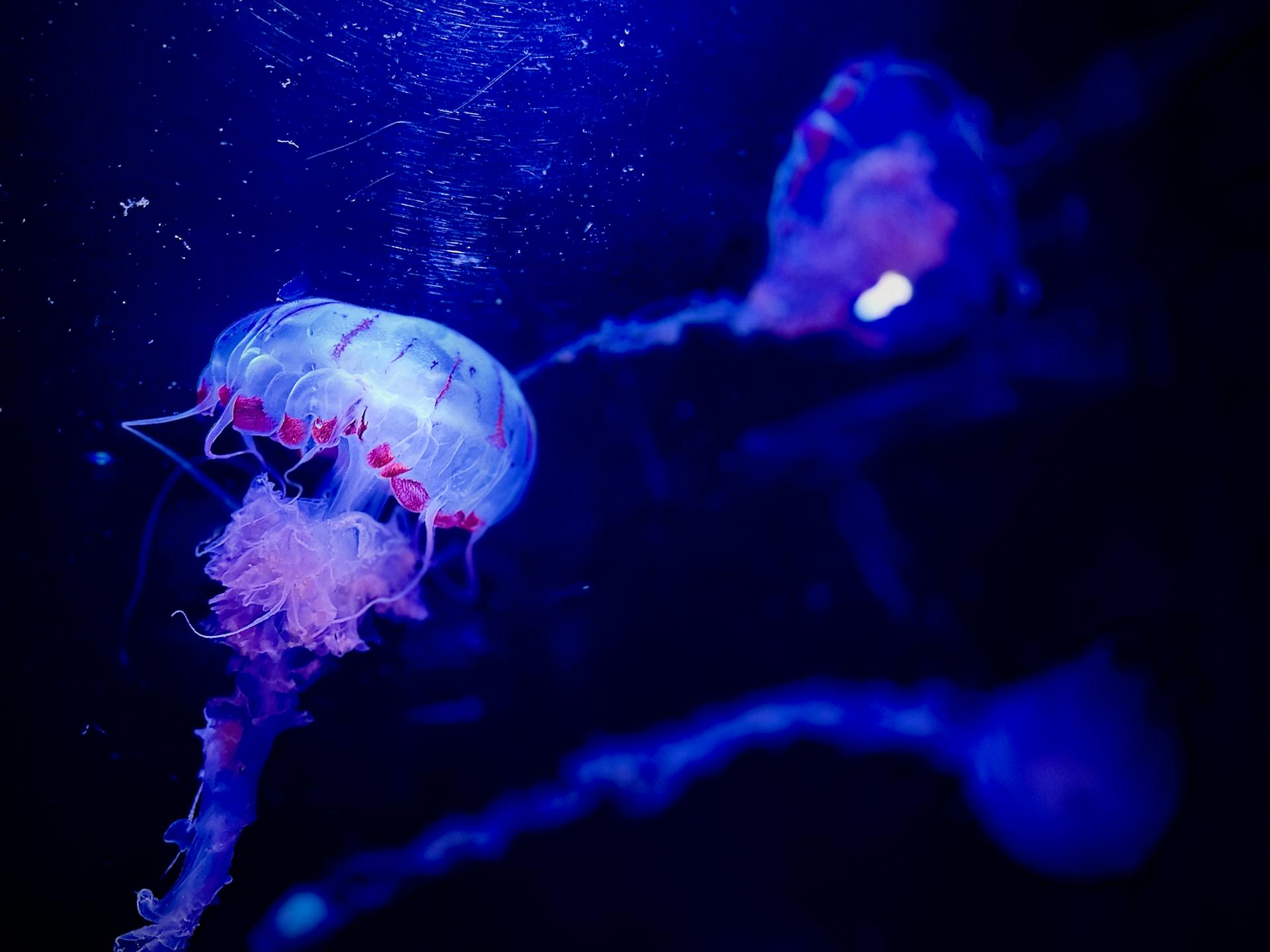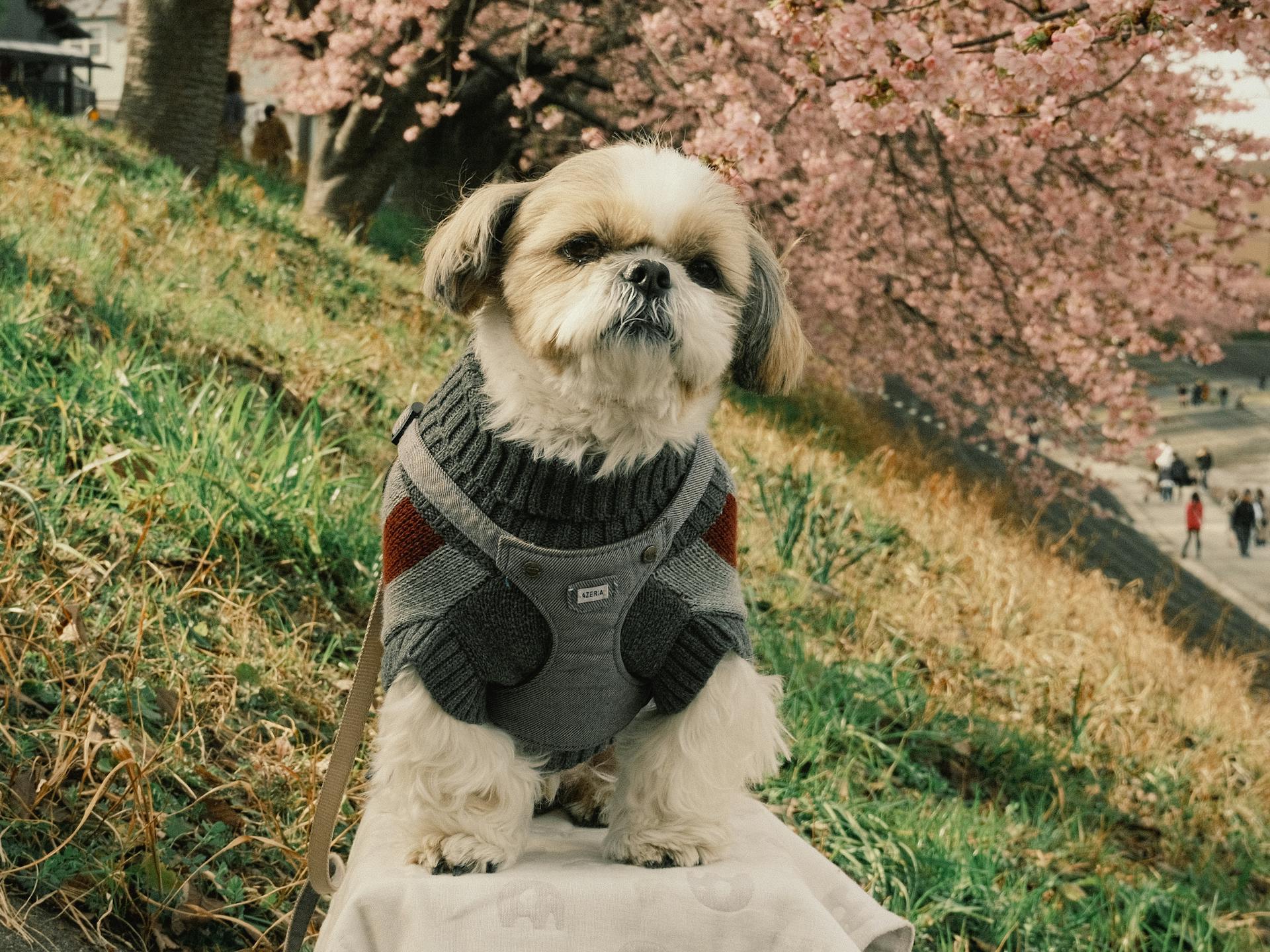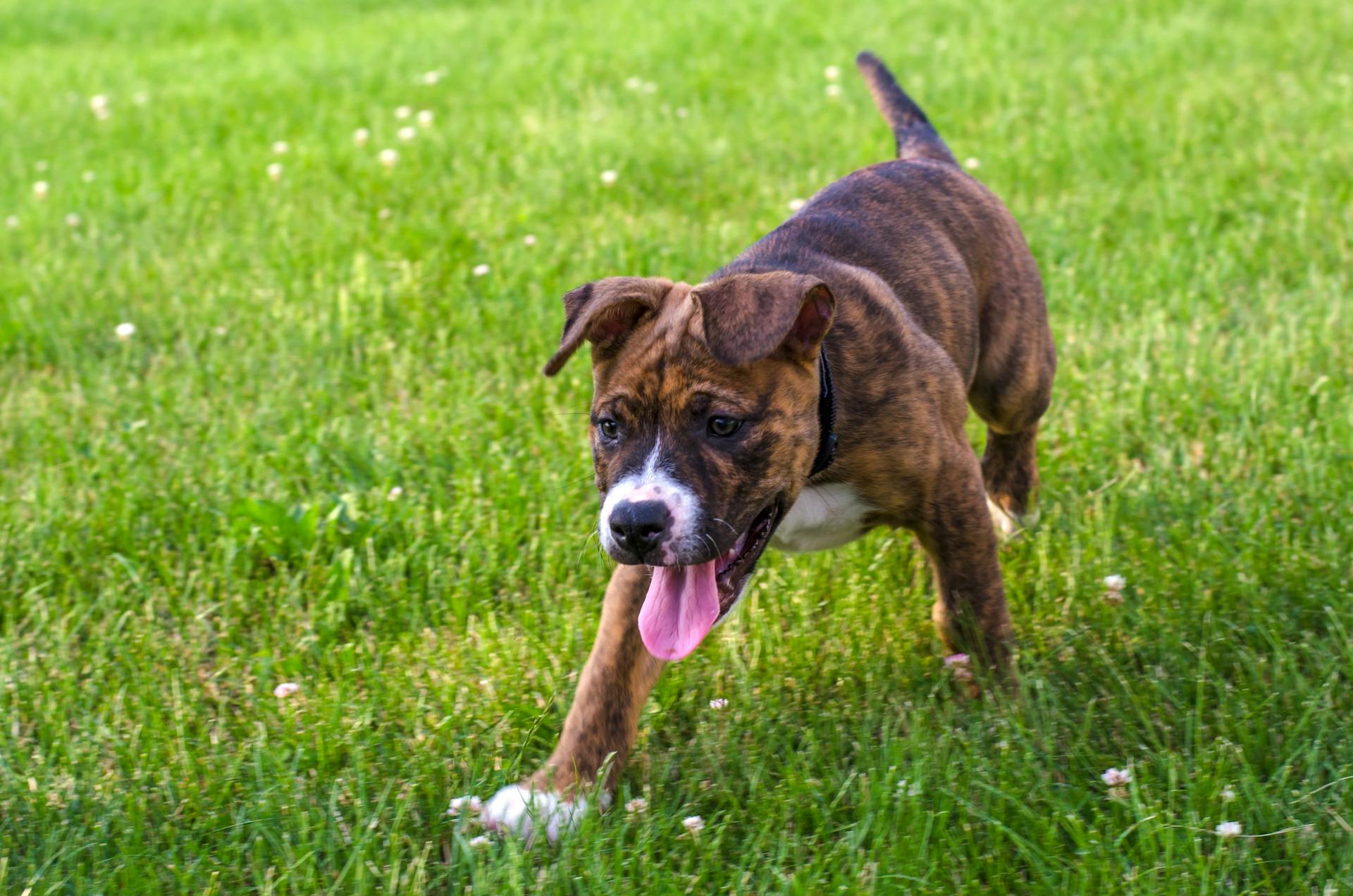
Blue Heeler life stages are a journey, and understanding them can help you provide the best care for your furry friend. Blue Heelers are typically born after 63-65 days of gestation.
As a puppy, a Blue Heeler is completely dependent on its mother and needs to nurse regularly. They start teething around 3-4 months and can be quite mischievous as they learn to navigate their surroundings.
Blue Heelers usually reach their full height between 12-18 months, but they continue to fill out and develop muscle mass until they're about 2-3 years old.
Life Stages
As your Blue Heeler grows, it's essential to be aware of the various life stages it will go through.
Blue Heelers are prone to certain health issues, including orthopedic problems, cancer, deafness, eye disorders, and progressive rod-cone degeneration. Regular veterinary visits can help screen for these issues and provide personalized recommendations for keeping your pup healthy.
You'll want to monitor your Blue Heeler's growth and development closely, especially during the first 10 months. Feed your puppy 3/4 cup of kibble three times a day during this period. After 12 months, you can switch to regular dog food and feed your Blue Heeler twice a day.
As your Blue Heeler matures, it's crucial to keep an eye on its overall health. Your veterinarian can help identify any potential issues early on, reducing the risk of more serious problems down the line.
Additional reading: Blue Heeler Behavior Problems
Care and Nutrition
As you care for your blue heeler, proper nutrition is essential to keep them energetic and healthy.
Blue heelers are active dogs that require a balanced diet to match their lifestyle. Most commercial dog food diets are suitable for companion blue heelers.
Feed your blue heeler puppy 3/4 cup of kibble three times a day until they're 10 months old, starting from 4 months.
Working blue heelers or those with high activity levels may benefit from performance diets specifically designed for their needs.
Look for foods with added glucosamine and chondroitin to promote healthy joints in active blue heelers.
How Big Do They Get?
Blue Heelers typically stop growing around 12 months old, but they'll continue filling out their chest for another 6-12 months until they reach maturity between 18 and 24 months of age.
Their weight will vary depending on their age, with most Australian Cattle Dogs weighing between 23 and 27 pounds at six months. Males tend to be slightly larger than females.
To predict your Blue Heeler's adult size, consider their age, paw size, and genetics. If they're less than a year old, they're likely still growing and gaining muscle. Oversized paws are a classic puppy feature, indicating they're still filling out.
Here's a rough estimate of Blue Heeler weight by age:
As for height, Blue Heelers typically reach between 18-20 inches for males and 17-19 inches for females when fully grown.
Health and Longevity
Blue Heelers are known for their robust health, but their lifespan is relatively short. The average longevity of a Blue Heeler dog is between 10 to 13 years.
Highly healthy and happy dogs can live for a couple of years or more beyond that average.
Health Problems
Blue heelers can live a comfortable life from 10 to 13 years if they're well taken care of by affectionate owners.
Australian Cattle Dogs are susceptible to a few medical conditions that can affect their health and longevity.
With proper care and attention, many Blue heelers can avoid or manage these health issues and live a long and happy life.
Their lifespan can vary depending on various factors, including genetics, diet, and lifestyle, but 10 to 13 years is a common range for this breed.
You might like: Blue Heeler Health Issues
How Long Does a Life Last?
A Blue Heeler's lifespan is relatively long, averaging between 10 to 13 years.
Healthy habits and regular care can contribute to a couple of extra years of life for these dogs.
Some Blue Heelers have been known to live for 13 years or more, making them a long-term companion for many families.
Training and Socialization
Blue heelers are intelligent and energetic dogs that require early socialization and training to understand what behaviors are unacceptable. They'll herd everything in sight, including children and other pets, so it's essential to teach them what's okay and what's not.
These dogs need to be socialized with dogs and people of all ages from an early age. Introduce them to new people and dogs while on a leash, and reward them for approaching calmly.
Blue heelers are quick learners and excel at canine sports like agility, flyball, and herding competitions. However, they can be aggressive when playing, so it's crucial to teach them what's acceptable behavior.
Australian Cattle Dogs can be too rough when playing, so it's essential to intervene and correct them. If they get too rough, pull them away on their leash and give them a quick timeout.
Proper exercise and activities are essential for blue heelers, who need at least two hours of physical and mental stimulation each day. This can include swimming, which they love, and agility activities that'll keep them happy and playful.
Blue heelers are very obedient and loyal to their owners, but they do require consistent training and socialization to become well-behaved adults.
Exercise and Activity
Exercise is a critical part of a blue heeler's life, and they need at least 30 minutes of walking, opportunities to run around, and an outlet for their herding instincts.
A variety of puzzles, chews, and tug toys can help keep your dog satisfied, and you can keep your dog entertained with a treat-dispensing puzzle or a rubber toy filled with peanut butter or another treat.
Australian Cattle Dogs, which are the same breed as blue heelers, have endless energy reserves and need several hours of vigorous activity each day.
Simply taking your dog for a walk is not enough, and you'll need to engage your dog in games involving chasing balls, running alongside a bicycle, or herding.
A tired blue heeler is a happy blue heeler, so be prepared to put in the time and effort to keep your dog active and entertained.
They won't like to sit still, and will follow you around the house and garden, walking close to heel and constantly focused on your every move.
Grooming and Breed Info
Blue heelers are a relatively low-maintenance breed when it comes to grooming. They don't require frequent bathing, but a good brushing every now and then can keep their coat looking great.
During the spring, when they shed their winter coat, you'll need to brush them more frequently to remove the excess hair. An undercoat rake or comb will do the trick.
A unique perspective: What Age Do German Shepherds Calm down
Their coats do shed lightly year-round, but you can expect two heavier moults over the course of the year. Good dental hygiene is also important, so brush their teeth daily from puppyhood.
Here's a quick rundown of some key grooming facts:
Their short coats require very little work for most of the year, but they do need regular nail trimming and tooth-brushing to stay healthy.
Grooming
Blue Heelers and Cattle Dogs have relatively low grooming needs. Their coarse coats don't hold much dirt, making them easy to clean with a brush every now and then.
Bathing is rarely required for these breeds, but they do shed lightly year-round. You can expect two heavy molts over the course of the year, when their entire coat is renewed.
Regular nail trimming is essential, especially from a young age. Start trimming your dog's nails from 2-3 months old to make it a less stressful routine for the adult dog.
Good dental hygiene is crucial for dogs, just like for humans. Introduce daily tooth-brushing from puppyhood to keep their teeth clean and healthy.
Blue Heelers may need extra attention during shedding season, such as in the spring when they shed their winter coat. Use an undercoat rake or comb to remove loose hair and keep their coat looking its best.
Breed Info
The Blue Heeler is a medium-sized dog with a short double coat. They can weigh between 14-16 kg and stand between 43-51 cm tall.
Their coat colors can be blue, red, or a combination of blue and gray. They have a short double coat, which requires regular grooming to prevent matting and tangling.
Blue Heelers are known for being active, affectionate, and loyal companions. They are highly intelligent and alert, making them great watchdogs.
Here's a breakdown of the Blue Heeler's size and weight:
They are generally good with children, but may not be the best fit for families with very young kids due to their high energy levels. Blue Heelers are also good with other pets, but as with any dog, proper introduction and socialization are essential.
Frequently Asked Questions
At what age do Blue Heelers settle down?
Blue Heelers typically mature and settle down between 4 to 6 years old. Consistent training and regular exercise can help calm and mature them at any age.
Featured Images: pexels.com


